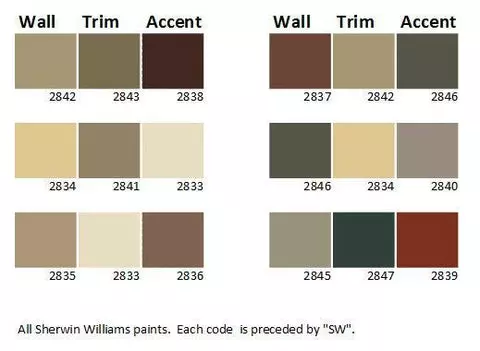"The purest and most thoughtful minds are those which love color the most" - John Ruskin, The Stones of Venice
When it comes to choosing the perfect color palette for your craftsman home, history provides us with timeless principles to follow. While there is room for self-expression and a wide variety of options, it's essential to understand the traditional approach to colors. In this ultimate guide to craftsman color palettes, we will explore the foundations of color selection, alternative options, and valuable tips for using your chosen colors. So, let's embark on this colorful journey!
Exploring the Craftsman Style
The craftsman style emerged from the Arts and Crafts movement in the late 18th and early 19th centuries as a response to the ornate and highly decorative Victorian style that was prevalent in Europe. Craftsman homes were characterized by functional designs, a commitment to quality, and a profound appreciation for the beauty of nature. The color palettes of craftsman-style homes have remained essentially unchanged throughout history, with the addition of new shades made possible by advancements in paint mixing technology.
 Caption: Craftsman home with warm, natural tones.
Caption: Craftsman home with warm, natural tones.
Exterior Craftsman Colors
Craftsman color palettes adhere to the core values of the style, featuring earthy browns, muted greens, warm golds, and even watery blues. These colors are applied to the three main areas of a craftsman home that require color: the walls, the trim, and the accents. The walls, often made of brick or natural stone, are considered the "body" of the house. The trim includes cornices, rafter tails, railings, and eaves, while accents encompass interior window frames, mullions, and porch pillars. Here are some classic options for exterior color schemes:
- Walls: Consider warm browns or muted greens.
- Trim: Opt for contrasting colors like earthy golds.
- Accents: Use deeper shades for added visual interest.
It's also worth incorporating neutral shades like Sandbar (SW7547) or Downing Sand (SW 2822) for areas like cement steps and porch ceilings. Additionally, custom-made exterior light fixtures from artisans like Arroyo Craftsman offer finishes in classic craftsman shades, such as Verdigris or raw copper with a natural patina.
Interior Craftsman Colors
Choosing interior colors for your craftsman home requires different considerations than the exterior. Start by identifying a focal point or foundation for your color scheme, such as a traditional arts and crafts style rug, stained glass, or a unique textile. Exposed wood, river rocks, and fireplace tiles can also provide context for your color palette. Placement of colors is equally important, taking into account the orientation of each room and the primary source of light. Additionally, consider the time of day the room is most used to ensure compatibility with natural or artificial lighting. Remember the psychology of color: blues for restful areas, greens for calm and inviting spaces, and warm yellows to stimulate the appetite in dining rooms.
Complementing Natural Wood
Natural wood is a defining feature of craftsman-style homes, and the colors you choose should enhance its beauty. Surprisingly, plain white paint doesn't effectively complement natural wood. Instead, opt for colors that bring out the richness and depth of the woodwork. As a general rule, the darker the wood, the further away from white your wall color should be to avoid a stark contrast. In arts and crafts style, neutral colors and shaded pastels are commonly used for interiors. For rooms that receive ample sunlight or for contrast with lighter woods, lighter colors are popular choices.
Key Considerations
Craftsman style homes are known for their softer color palettes. Aim for medium contrast colors instead of heavy dark tones, as they can diminish the overall effect. When selecting lighter tones, think dusty rather than pastel for a more authentic craftsman feel. For surface finishes on walls or ceilings, opt for flat or matte finishes instead of satin or semi-gloss, which are traditionally reserved for trim.
Craftsman Color Palettes
To help you get started, here are some basic craftsman color palettes from Sherwin Williams, known for their historic color selections. Feel free to explore their ColorSnap app, an excellent tool for visualizing paint colors in your space.

We hope this ultimate guide to craftsman color palettes has provided you with valuable insights and inspiration for creating an elegant and cohesive color scheme for your craftsman home. Remember to embrace your personal preferences while adhering to the timeless principles of the craftsman style. Enjoy the process and have fun bringing your vision to life!

















